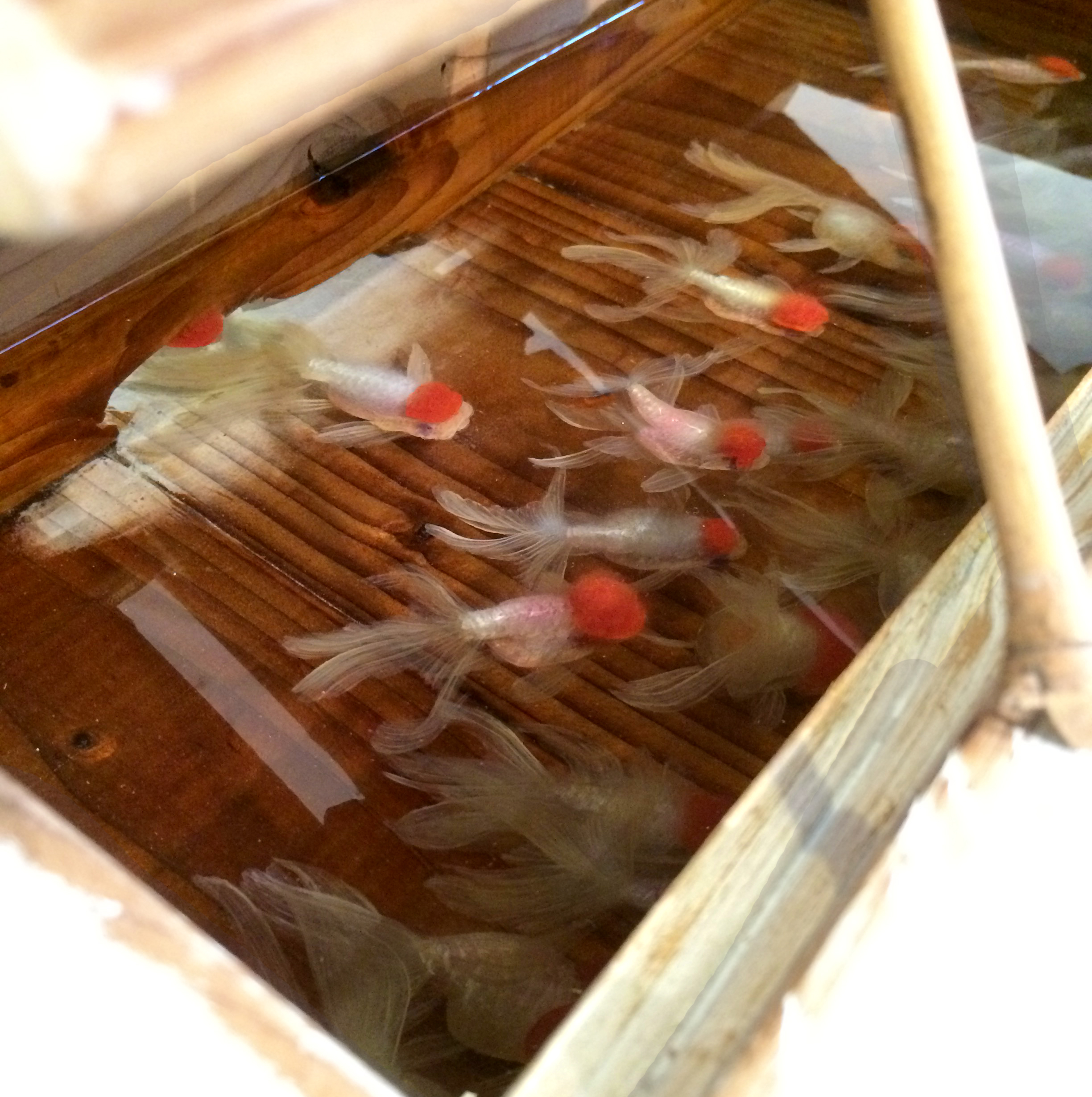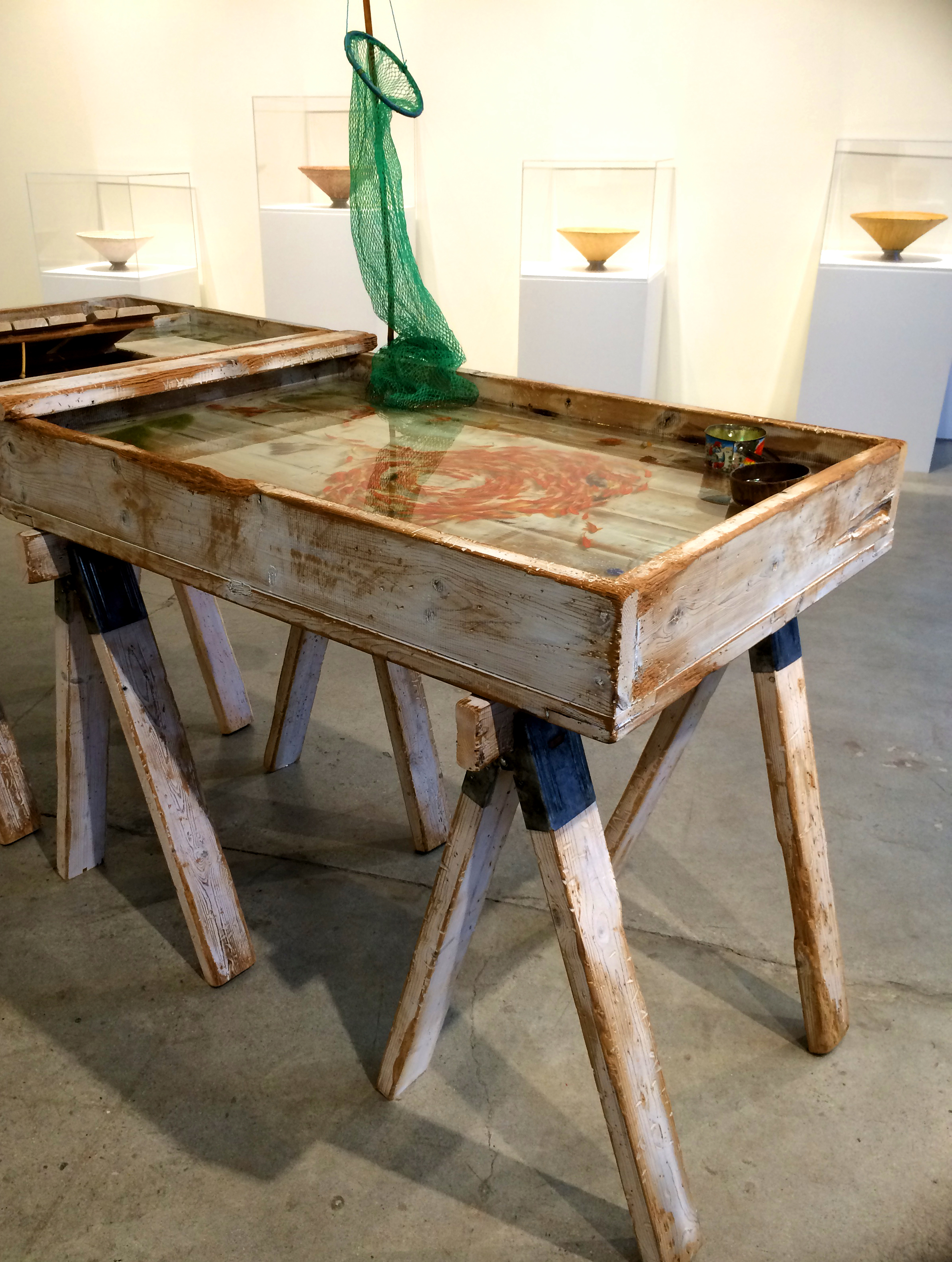Goldfish Salvation
close up of "Kingyo Sukui (The Ark)" ©Japan Suite Inc
©Japan Suite Inc
close up of "Kingyo Sukui (The Ark)" ©Japan Suite Iinc
This weekend, we went to see the incredible work of Japanese artist Riusuke Fukahori and his new exhibition “Goldfish Salvation” at the Joshua Liner gallery here in NYC. If you can, we strongly encourage you to go and see his amazing work, which is on display through Dec. 19.
Seeing his goldfish, looking so 3D and life-like, suspended in clear acrylic in various rustic containers, the first thought was, did he imprison real fish? The answer was no, but my eyes had a hard time believing it. Looking at them from many angles, it was hard to figure out how he managed to make them look so real. We later learned how he does it, but understanding Fukahori’s process and meticulous method of working makes it all the more impressive.
"Kingho sake - yuzu" ©Japan Suite Inc
Fukahori’s story and his inspiration for “Goldfish Salvation” is both a comment on his own salvation as an artist and a sobering warning for humanity. He says when he was at a very low point in his life, wondering about continuing his path as an artist, he happened to glance at the goldfish that had been there everyday for seven years in his apartment, and he was struck by it’s beauty as it swam in the dirty tank. “Why has it taken me so long to see this beauty and insanity? The goldfish has everything, thus it's beautiful,” Fukahori said. “I then began to paint goldfish and now, I am still painting them.”
"Tsuzuki" ©Japan Suite Inc
Looking at his beautiful images of goldfish in natural surroundings, seemingly swimming in unison through pristine waters, you begin to understand the allegory. We prefer to let Fukahori explain it:
“In the aquarium, similar to human society, there is a story of birth and death. As long as they live, these goldfish will continue to soil the fish tank, and if not changed, the water will only get tainted leading to death for all the goldfish. This is quite true for the human species as well… The goldfish that I paint are not really goldfish, but representations of people. I feel as though the fish tank is only foretelling what would happen to the earth in the future. We as human beings are the main source polluting our own air we breathe.”
watch the making of incredible artworks. Learn more at his official site
"Kingyo Sukui (The Ark)" ©Japan Suite Iinc
©Japan Suite Inc








